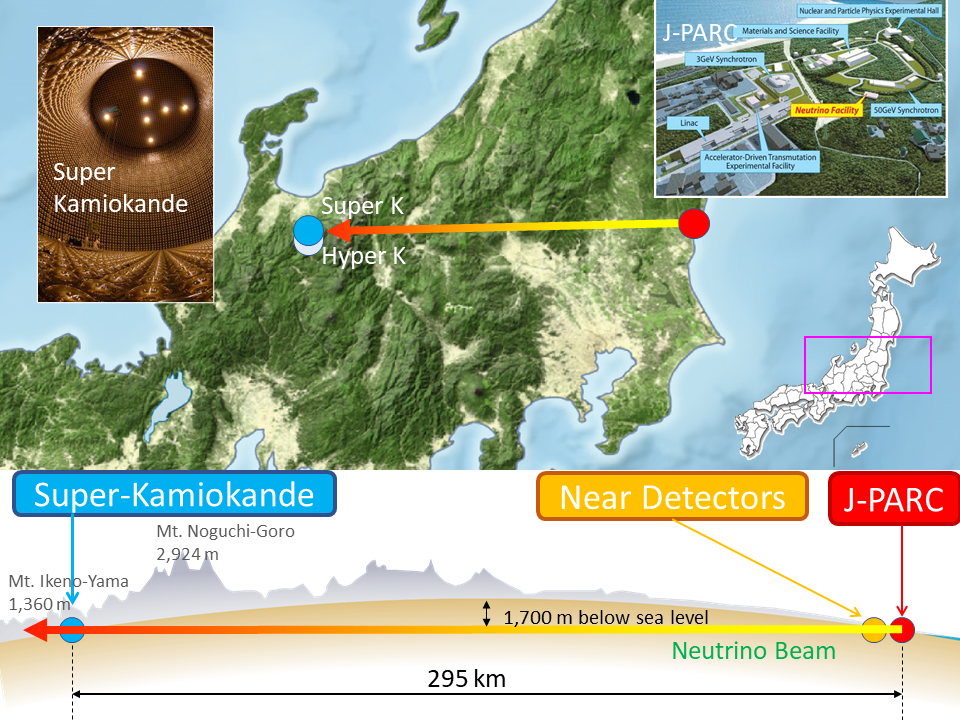Do neutrinos violate CP symmetry?
In 1930, Dirac think about the properties of elementary particles based on the theory of relativity and predicted the elementary particles are accompanied with opposite charge states “antiparticles”. The actual existence of antiparticles was confirmed by the discovery of the positron in 1932.
It was believed that particles and antiparticles have the same properties except for their charges, i.e., the laws of physics that elementary particles obey are invariant to charge (C) transformation and spatial inversion (P, parity).
However, our universe is full of matter only, and there is no antimatter made of antiparticles. In order for the universe to exist in such a state, Sakharov showed in 1967 that (1) processes that violates baryon number conservation, (2) processes that violates CP symmetry, and (3) violation of thermal equilibrium are necessary.
Actually, the violation of CP symmetry had been found in 1964 in the decay of neutral K mesons. The neutral K meson is a composite particle made of one quark and one antiquark. Kobayashi and Maskawa proposed the theoretical model that this CP violation is due to the existence of three or more generations of quarks with different masses, and this model was later confirmed experimentally. However, it turned out that the CP violation in the Kobayashi-Maskawa model was 10 orders of magnitude short of explaining the current amount of matter. The matter-antimatter asymmetry in our universe is a mystery that cannot be explained by the modern standard theory of elementary particles.
In 1998, Super-Kamiokande discovered the phenomenon of neutrino oscillation, and it became clear that neutrinos have mass., which also means that CP symmetry can also be broken in leptons.
Currently, the most promising theoretical model to explain the origin of the matter-antimatter asymmetry in the universe is called leptogenesis, which holds that the CP violation of neutrinos gave rise to the lepton number, which in turn gave rise to the baryon number.
In order to observe CP violation in neutrinos, our group is conducting accelerator neutrino oscillation experiments, T2K and Hyper-Kamiokande project. Neutrinos produced by the J-PARC accelerator are measured, after traveling 295 km, by the Super-Kamiokande or by the Hyper-Kamiokande detector currently under construction 295 km away . T2K has shown that CP symmetry is broken with a 90% or higher confidence level in 2020. It is increasingly likely that we will have an answer in the late 2020s as to whether neutrinos are breaking CP symmetry, and if so, how big they are!
For more detail about T2K and Hyper-Kamiokande, see
